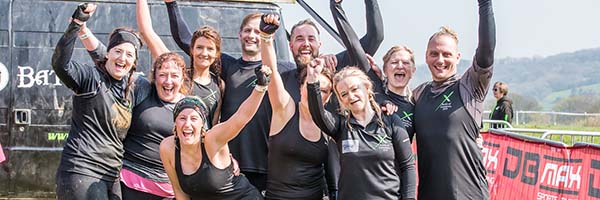Obstacle course racing has gained immense popularity in recent years (we think we can claim part-responsibility for this due to our successful events like Rood Rampage 😉). OCR events involve participants racing through a course filled with a variety of obstacles that challenge their strength, endurance, and mental toughness.
The history of obstacle course racing dates back to the early 20th century, and it has evolved significantly over time. In this article, we will explore the fascinating history of OCR, from its early roots to its current status as a global phenomenon.
Origins of Obstacle Course Racing
The earliest recorded examples of obstacle course racing date back to the early 1900s. These events were often held as part of military training and were designed to prepare soldiers for the rigors of combat. Obstacle courses were used to test a soldier’s physical fitness as well as their ability to navigate challenging terrain and obstacles. These early obstacle courses typically consisted of a series of hurdles, walls, ropes, and other physical challenges.
Over time, obstacle course racing became a popular form of physical training outside of the military. Many schools and universities began to incorporate obstacle courses into their physical education programs, and various organizations began to host obstacle course races as a form of entertainment and competition.
Evolution of Obstacle Course Racing
In the 1980s and 1990s, obstacle course racing began to take on a more competitive and commercial form. The first modern-day obstacle course race is generally considered to be Tough Guy, which was founded by British farmer Billy Wilson in 1987. The Tough Guy Challenge was designed to be a gruelling test of physical and mental strength, and it quickly gained a following among extreme sports enthusiasts.
The popularity of obstacle course racing continued to grow throughout the 1990s and early 2000s. A number of new races were founded during this time, including the Spartan Race, Tough Mudder and DB Max’s OCRs. These races feature a variety of obstacles, including mud pits, barbed wire crawls, and rope climbs, and they quickly gained a reputation for being some of the toughest races around.
In recent years, obstacle course racing has become even more mainstream. The sport has been featured on popular television shows like Ninja Warrior and it has attracted a growing number of professional athletes and elite competitors. Today, obstacle course racing is a global phenomenon, with races held in dozens of countries around the world.
What makes OCR events unique?
One interesting aspect of obstacle course racing is the emphasis on teamwork. Many OCR events encourage participants to work together to overcome obstacles, and some events even require participants to help each other in order to complete the course. This focus on teamwork and camaraderie sets OCR apart from other individual sports and has helped contribute to the sport’s popularity.
In conclusion, obstacle course racing has a long and storied history, dating back to military training and early fitness trends. Today, OCR is a popular sport with a massive following around the world. From simple military-style obstacle courses to complex, multi-day events, OCR has evolved significantly over the years. The emphasis on teamwork and camaraderie sets OCR apart from other individual sports and is one of the factors that has helped contribute to the sport’s popularity. Whether you’re a seasoned OCR athlete or a beginner looking to try something new, there’s never been a better time to get involved in obstacle course racing.
Back to Blog



